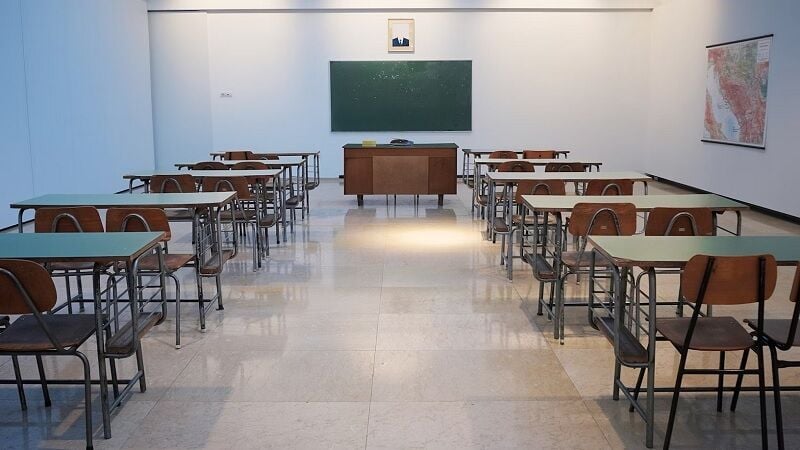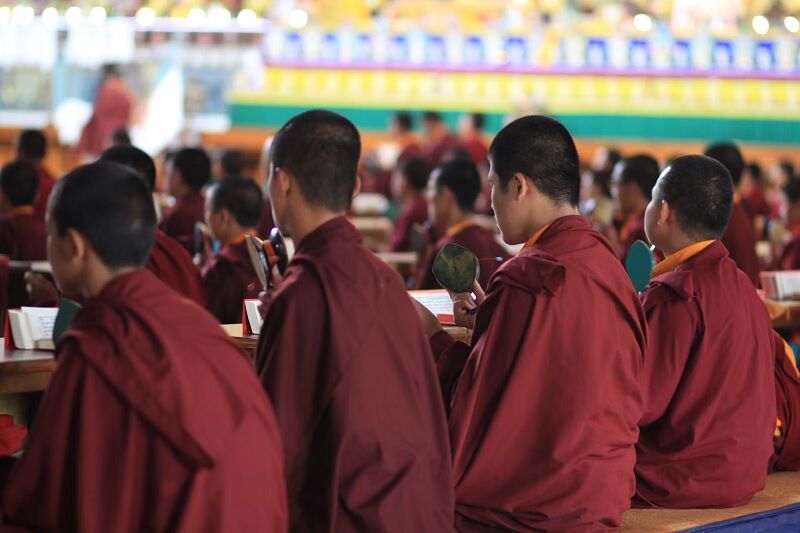Thailand’s education revolution: Past, present and future

Education in Thailand has journeyed through a fascinating evolution, shaping the minds and futures of countless individuals. From traditional methods to the integration of digital technologies, this transformation reflects both the nation’s rich history and its forward-looking aspirations.
At the heart of this evolution lies a deep respect for educators, a trait deeply embedded in Thai culture. Yet, challenges such as financial constraints for teachers have spurred governmental actions aimed at improvement. Meanwhile, the recent push towards digital learning, highlighted by the introduction of new educational TV channels, marks a pivotal shift towards modernising Thai education.
The roots of education in Thailand
 Initially, education in the kingdom centered around temples, where monks imparted knowledge based on religious texts and moral values. This system established the cornerstone for literacy and learning, particularly among males, as education remained largely inaccessible to females and the lower socioeconomic classes.
Initially, education in the kingdom centered around temples, where monks imparted knowledge based on religious texts and moral values. This system established the cornerstone for literacy and learning, particularly among males, as education remained largely inaccessible to females and the lower socioeconomic classes.
As the world entered the 19th century, Thailand embraced a shift towards more structured educational frameworks. This period marked the beginning of formal education, drawing inspiration from Western models. The introduction of schools that diverged from temple-based schooling propelled the nation into a new era of educational reform. It wasn’t just about reading and writing anymore; subjects like mathematics, science, and languages became part of the curriculum, laying the groundwork for a comprehensive educational system.
The evolution of education in Thailand didn’t stop there. The 20th century saw the establishment of universities, further expanding the horizons for Thai students. This era also introduced policies aimed at making education accessible to all, irrespective of gender or social standing. Such initiatives signified a profound change, slowly but surely dismantling the barriers that had kept significant portions of the population in the dark.
Fast forward to the present, and you’ll find that Thailand’s commitment to evolving its educational landscape continues unabated. Digital technologies have become integral, pushing the boundaries of what’s possible in teaching and learning. The future scope of education in Thailand looks bright, with ongoing discussions about integrating even more innovative solutions to tackle current challenges.
The influence of monarchy and religion on early education

Monarchs, recognizing the power of an educated populace, championed the cause of education. They established the first formal education systems, ensuring that foundational learning was accessible to all. This was not merely an act of benevolence but a strategic move to modernize Thailand and secure its place on the global stage. Education, under royal patronage, started to evolve, introducing diverse subjects that went beyond religious teachings.
Religion, particularly Buddhism, continued to guide the framework of these early educational systems. Temples remained educational sanctuaries, where monks imparted wisdom on spiritual matters, ethics, and basic literacy. These institutions underscored the moral underpinnings of education, ensuring that learners grew to be not just knowledgeable but also ethically grounded individuals.
The shift towards more structured formal education, inspired by the Western model in the late 19th century, marked a significant departure from the temple-based learning system. However, the foundational values instilled by the early influence of monarchy and religion continued to resonate, ensuring that Thailand’s educational evolution remained uniquely tied to its cultural ethos.
The transitions to formal education systems
In the late 19th century, driven by the desire to modernize the nation, Thai monarchs began championing reforms that laid the groundwork for today’s education system. This was a time of transformative change, integrating a diverse range of subjects beyond the religious teachings that had previously dominated learning spaces.
The adoption of a formal education structure was inspired by Western models, yet it uniquely maintained the core values instilled by the interconnected roles of monarchy and religion. This blend of traditional and modern elements ensured that the evolution of Thailand’s educational sector did not erode its rich cultural ethos.
The modernization efforts didn’t just stop at curricular changes. Investments in teacher training became a focus, reflected in initiatives like the BT8 billion project aimed at enhancing the quality of educators over 15 years. Despite challenges, such as educators struggling with subjects they taught, these efforts underscored a commitment to elevate teaching standards.
Recent developments reveal a continuing effort to adapt and improve the educational environment. For instance, the decision to relieve teachers from mandatory after-hours duties on campus showcases responsiveness to educators’ welfare, enhancing the quality of teaching and learning experiences.
The National Education Act of 1999
In 1999, Thailand embarked on a transformative journey in its approach to education, marking a significant shift in the nation’s educational landscape. This pivotal change came with the introduction of The National Education Act of 1999, a landmark piece of legislation that redefined the evolution of education within the country. It laid down a foundation for future advancements, ensuring that the history of Thailand’s education system would enter a new chapter of progress and innovation.
For the first time, this Act prioritized a more holistic approach to learning, one that not only focused on academic excellence but also stressed the importance of moral and ethical development. You’ll find that it positioned students at the very heart of the education process, encouraging a learner-centered approach that was revolutionary at the time. This significant pivot aimed to equip Thai students not just with factual knowledge but with the critical thinking and problem-solving skills needed to thrive in a rapidly changing world.
As part of this new era, continuous improvement became a mantra within Thai education circles. Feedback loops and regular assessments ensured that the system remained responsive and relevant, adapting not just to the national context but also to global trends and standards.
The National Education Act of 1999 didn’t merely herald a new chapter in the history of education in Thailand; it set the stage for ongoing evolution, ensuring that the country’s education system could meet the challenges of the future with confidence and resilience.
The role of technology in shaping contemporary Thai Education

Active implementation of digital tools has not only broadened the historical context of education but also streamlined the teaching and learning processes. Imagine classrooms where interactive whiteboards replace dusty chalkboards, facilitating a more engaging learning experience. You’re part of a generation witnessing this incredible shift, where digital literacy becomes as fundamental as reading and writing.
Digital platforms and online resources have become indispensable, offering unlimited access to knowledge. This democratisation of information ensures that students in remote areas can tap into the same wealth of resources as those in bustling cities. The future scope of Thai education lies in its ability to leverage technology, ensuring equal educational opportunities for all.
Moreover, the introduction of comprehensive testing platforms such as the TGAT highlights the integration of critical and logical thinking through digital means. The exams, specifically designed for different fields such as medicine, engineering, and education, underscore the importance of technology in evaluating and enhancing student competencies.
Vocational training and higher education
Recent endeavors have focused on boosting enrolment rates in secondary Vocational Education and Training (VET) programs. This move aims to enhance manpower by upskilling the labour force that lies outside university education. The Ministry of Education’s Strategic Action Plan from 2005-2008 set ambitious goals. It planned to elevate vocational enrolments to constitute 50% of all upper-secondary enrolments. Despite facing hurdles, the government’s persistent efforts underscore the future scope of Thailand’s educational framework.
On the higher education front, Thailand’s journey has been equally transformative. May 2020 marked a significant leap with the approval of 17 new digital TV channels dedicated to education. These channels, spanning from 37-53 along with Thai PBS, began broadcasting active learning programs on Channel 4. This initiative, initially set for a six-month period starting July 2020, illustrates the innovative approaches towards enhancing education accessibility. The launch of these digital learning avenues is a testament to Thailand’s commitment to not only uphold the history of its rich educational traditions but also to adapt and innovate in the face of changing times.
Future directions
The transformation doesn’t stop here. The curriculum revamps to include TPAT exams and augmented foreign language offerings highlight a remarkable journey from past practices toward a future-ready education system. These efforts reflect a proactive approach to aligning with international standards, ensuring Thai students are well-prepared to excel in a global workforce.
Moreover, the emphasis on future workforce competency underscores the necessity for education systems to evolve continually. It’s not just about embracing technology but also about fostering an environment where innovation and inclusivity lead the charge. Such reforms signify a bold step towards not just enhancing education but molding it to fit the impending needs of a rapidly evolving world.
Considering the above-shared details, You can also explore a guide to mastering the Thai education maze, Thailand hosts over 30,000 schools, nurturing more than 20 million students through a well-organized framework. Education here spans 12 years and is compulsory for nine of those, divided into two main phases: primary and secondary education.
Latest Thailand News
Follow The Thaiger on Google News:


























